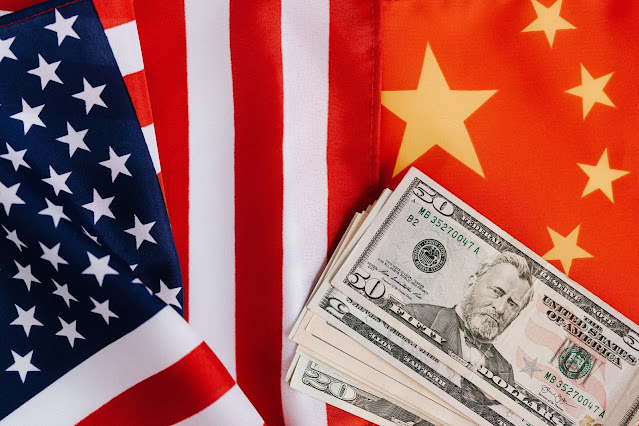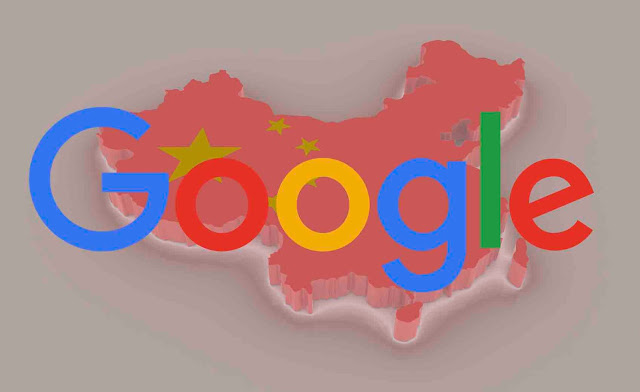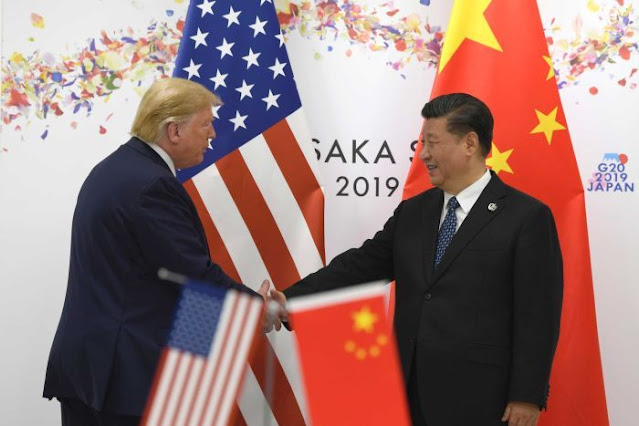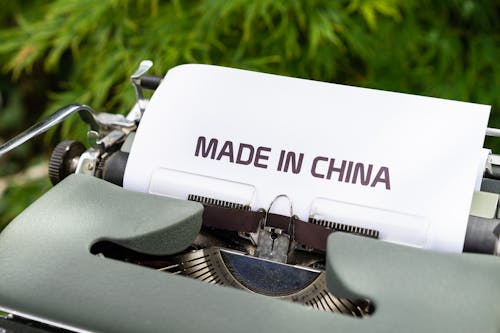 |
| Photo by Karolina Grabowska from Pexels |
We have all experienced that dilemma while playing Nintendo or any other games with someone who utilises unfair means to win, yet we have to abide by in silence, as they own the games. In the trade-war, China is that kid, who has the monopoly over most of manufacturing of the world, not only the prowess and manpower required, but also in terms of the raw materials. Even most of the world’s trash is send to China for recycling of raw materials, for, you guessed it, selling it back to other countries.
When China entered the World Trade Organisation (WTO), back in 2001, which was ushered by none other than our “OG supahpowah”, ‘merica!
After joining the WTO, China became a global-superpower in trade. Bill Clinton, the then US President announced,
“Bringing China into the WTO is a win-win...it will protect our prosperity, and it will promote the right kind of change in China”.
Now, in 2016, in (now US President) Trump’s election campaign, he said,
“We can’t continue to allow China to rape our country (in terms of trade)”.
 |
| While Google is blocked in China, Baidu enjoys Chinese State-incentives. Courtesy: Twitter/nayak_geda |
It is patently clear that China really doesn’t play well with foreign businesses, as showcased by its discrepancies over Google’s search-engine. China asked Google to share user’s data to help the government track them better, while they promoted their own Chinese alternative, Baidu. This essentially killed Google’s chances in China.
The US imposed tariffs on more than $360 billion on import of China-made products, and China has retaliated with tariffs on more than $110bn of US products.
The US further imposed three rounds of tariffs in 2018, and a fourth one in September last year. The most recent round targeted Chinese imports, from meat to musical instruments, with a 15% duty. While, China countered with tariffs ranging from 5% to 25% on US goods.
So, this begs the question, will trade-war become more intense? Now that COVID-19 pandemic which originated in China spread to most countries in the world, which has disrupted the world’s supply-chain and manufacturing for businesses ranging from smartphones and computers chips to the soft-drink containers. Under the "phase one" trade-deal signed in January, China promised to boost US imports by $200 billion from its 2017 levels and toughen intellectual property rules. Though, it is uncertain how the “Phase-two” will be initiated and what issues it will address or even a viable timeline amidst this Corona virus outbreak.
Current trade scenario:
/cloudfront-us-east-2.images.arcpublishing.com/reuters/64P37KU2WRKXRBFWWOLFHZV5Z4.jpg) |
| Deserted Disneyland in Los Angeles, California. Courtesy : Reuters/ Mike Blake |
While the entire world is desperately anticipating a vaccine, WHO gave the official timeline for the mass-vaccination availability in around early-2021. Hence, most countries are trying to trickle charge their economies by allowing some businesses to open by June-July. As the world-economy is dwindling down, with lack of sales in public goods, like smartphones, electronics, food and beverages. While the most hit sectors are those who absolutely depends on people getting out of their houses, hence, film and television industries are incurring losses, while several theme-parks, cinema-theaters, and cruise-lines owners are on the verge of bankruptcy.
Walt Disney Co had to furlough most of their ‘Disneyland’, theme park employees, with almost no new money coming from their movie properties. As several blockbusters in their pipeline, that would have grossed around billion dollars, had it been released before this pandemic. Meanwhile AMC theaters are desperately waiting on the lockdown to be lifted in USA, with their debt-sheets inching them closer to declaring bankruptcy.
 |
| Apple's Manufacturing Partner, Foxconn's factory in China. Image Courtesy: Reuters |
Technology companies are also suffering production and supply-chain delays, as most of the production were based in China. The bigger issue on hand is the low-public demand, as most OEMs are losing sales with most people stuck at home, while even online deliveries are also locked out of option in several locations. Tech Giant, Apple has been trying hard to ramp-up production and has been keeping a close eye on its ‘supply-chain’ manufacturers like TSMC, LG, SK Hynix and Samsung, etc.
Even most of the test-kits required for COVID-19 diagnosis are manufactured in China, along with most of the supply-parts for respiratory medical devices like ventilators, that are required for treatment of coronavirus’ onset symptoms.
Lame...Blame-Game:
U.S. President Donald Trump blamed Beijing for a lack of transparency over the accurate stats of the outbreak in China — where it is believed to have originated from. In retaliation, Chinese foreign ministry spokesman Zhao Lijian implied that the U.S. themselves are not dealing with the outbreak effectively. He further initiated a conspiracy theory, that America might be the source of the SARS-COV-2 outbreak in Wuhan
 |
| President Donald Trump shakes hands with President Xi Jinping during a meeting in Japan in 2019. Courtesy : Susan Walsh/Associative Press |
“When did patient zero begin in the US? How many people are infected? What are the names of the hospitals?” Zhao asked in a tweet on March 12. “It might be US army who brought the epidemic to Wuhan. Be transparent! Make public your data! US owe us an explanation!”
The United States, lead shareholder and contributor, of IMF, also opposed the IMF's call for countries to contribute to their SDR ( Special Drawing Rights) fund, which would fund the debt-relief and aid for poor G20 countries. USA blocked the funding, as there is a likelihood that the relief might go to China.
Trump administration also halted USA’s funding for WHO, over discrepancies with WHO for letting China off the hook even after their mismanagement of the breakout and irresponsible suppression of information regarding the virus. Trump called out WHO, Director- General, Dr. Tedros for not being stern enough with China.
“Boycott China” :
This sentiment took momentum with U.S. President Donald Trump’s campaign to ban trade of U.S. firms with Chinese tech-giant, Huawei. On May 15, 2019, Trump deemed Huawei a national security risk. Following this, in July 2020, UK bans Huawei from 5G network implementation with Google officially ending its Android Support License with Huawei.
Indian Government banned 224 Chinese Apps till date as a retaliation to China disturbing the Indo-China border security. These apps including PUBG, TikTok and Shein; in the Indian app stores of Google, Apple and Microsoft.
On September 2, Ministry of Electronics & IT, tweeted : “Government Blocks 118 Mobile Apps Which are Prejudicial to Sovereignty and Integrity of India, Defence of India, Security of State and Public Order.”
 |
| Indians breaking their TV sets from Chinese OEMs after Indian Soldier killed during Indo-China border dispute.Courtesy: Newsflare |
Following India’s action, on September 18, 2018, Trump Administration banned TikTok and WeChat From U.S. App Stores.
Win for India:
 |
| Courtesy: Shutterstock/CNN |
China began the journey of becoming a global-trade power and now has been crowned the world’s manufacturing hub, as everything is being manufactured there. This is further boosted by China’s large supply of raw-materials and recycling prowess. However, the most brief reason for China’s success in the ‘manufacturing business’ is owed to the sheer amount of cheap labour available there, in comparison to North-America or Europe.
With trade-war, came the rise of tariffs from both sides, and multinational firms have been looking to mass-produce their products elsewhere to forgo the taxes imposed which has been reducing their profit-margins. Here comes, countries like India, and Vietnam with a solution, along with their plethora of cheap labours’ supply.
Most OEMs from the USA have partnered with contract manufacturers to mass-produce their designs. instead of outright owning a factory in China. The partners would even handle the logistics, and these manufacturers have also been looking to expand to other countries.
Sutapa Basu, Economics PhD scholar at MSU university and analyst, states:
“It could surely catapult India into the topmost producers category provided the country's manufacturing capacity increases.” “Last year India's total output was less than $300 billion while that of China was more than $2 trillion; Another reason is India's lackadaisical attitude towards implementation of projects due to the lack of laws that are conducive to production”, she added.
Apple’s manufacturing partners in China, like Foxconn, have been considering the idea of shifting iPhone production to India. Currently around 95% of Apple’s products are manufactured in China.
Tech OEMs like Apple have to pay around 20% import on top of the GST, which will be waived off after implementation of localized production. This will reduce the cost of the products in India, and will also create more jobs, improve the economy. Should this work as expected, it could result in India reaching its $ 5-trillion economy goal.
But there’s a catch....
China could still prevail in the trade-war, even after the pandemic ceases:
Countries like Vietnam and India may have their fair-share of cheap labour, actually way cheaper labour than China’s, whose average monthly wage of labourer’s reached around $1000 in 2018. However, other countries lacks the technical skills required in the labour supply.
This was showcased, when Jabil, the electronic manufacturer needed to scale-up their production, they were able to hire around 35,000 workers in 6 weeks. This kind of supply of skilled-workers is unparalleled.
Plus, as the outbreak originated from China, the Chinese government, albeit a bit late, have started addressing the spread and working on contingencies to open their factories and industries as soon as possible with least economic effects.
China, also sits on the biggest utilisation capacity of lanthanide’s (earth- metals used for electronic manufacturing) reserves. With this monopoly, if China were to cease supplying these to countries like the USA, every industry utilising tech would be affected. This can even affect the extremely important sectors like defence, communication and medical.
As of now, every country is starting to have a love-hate relationship with China, who is being like the ‘psycho-girlfriend.’ This apparent with China's anti-competitive business policies for foreign firms, and the alleged spying with their technologies.
However, except USA, other country can only try and resist these, and hope for another viable manufacturing-hub in other nations. Till then countries like India will have to foster this symbiotic relationship of supply-and-demand with China.
Author:


Post a Comment